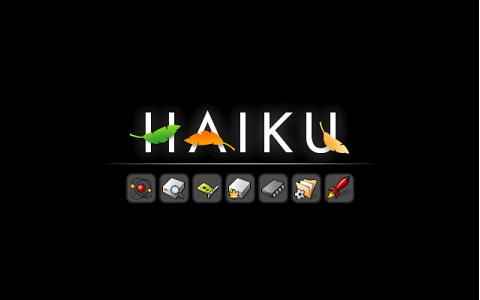Загрузчик (Boot Loader)
Загрузчик Haiku может помочь решить аппаратные проблемы или выбрать, какую из систем запустить для установки, если у вас более одной копии Haiku (установочный CD или USB-карта).
Загрузчик также полезен после установки программного компонента, который препятствует успешной загрузке системы. Опция Запретить загрузку пользовательских дополнений (Disable user add-ons) запустит систему без компонентов, установленных пользователем (например драйвер).
Для того чтобы зайти в настройки загрузчика, необходимо нажать и удерживать клавишу SHIFT до начала загрузки Haiku. Если загрузчик установлен, то вы можете начать удерживать SHIFT перед выбором загрузочной записи Haiku, а если она является единственной операционной системой на компьютере, то вы можете начать удерживать клавишу во время стартовых сообщений BIOS.
 Boot Loader Options
Boot Loader Options
Вы увидите три пункта меню:
| Выбор загрузочного раздела (Select boot volume) | Выбрать с какого раздела запустить Haiku. | |
| Select safe mode options | There are several options to try in case of hardware related trouble or if the system becomes unstable or unbootable because of a misbehaving add-on. When moving the selection bar to an option, a short explanation appears at the bottom of the screen. | |
|
| ||
| Select debug options | Here you'll find several options that help with debugging or getting details for a bug report. Again, a short explanation for each option is displayed at the bottom. | |
|
| ||
| If "Enable debug syslog" is activated, a warm reboot after a crash shows these additional options: | ||
|
| ||
| Выбор безопасного видео-режима (Select fail safe video mode) | Если вы активировали опцию Use fail-safe video mode, то сможете выбрать разрешение экрана и глубину цвета. |
 Troubleshooting
Troubleshooting
If Haiku refuses to boot on your hardware from the get-go, try out setting different options under . Consider filing a bug report in any case.
On the other hand, if Haiku only suddenly acts up after you have installed some software, especially hardware drivers, you have several options to get Haiku bootable again to make things right by uninstalling the offending package again:
Activating will prevent most servers, daemons and the UserBootScript from being started.
Activating will prevent using any add-ons (drivers, translators, etc.) you have installed in the user hierarchy under your Home folder.
If the offending driver, add-on etc. is installed in the system hierarchy, things get a bit more complicated, because that area is read-only. Here, the comes into play. With it, you can navigate through the whole system hierarchy and disable the component that's messing things up for you by checking an entry with the SPACE or RETURN key. ESC returns you up one level to the parent directory.
Online, there's the article How to Permanently Blacklist a Package File showing how to make that setting stick.
 Booting Haiku
Booting Haiku
После активации одной или более опций вернитесь в главное меню и продолжите загрузку. Далее вы увидите загрузочный экран:

Если все в порядке, то иконки будут быстро загораться, одна за другой.
Каждая иконка соответствует определенному этапу загрузки:
| Атом | Инициализация модулей. | |
| Диск с лупой | Создание корневой файловой системы (/) и монтирование файловой системы устройств (/dev). | |
| Карта расширения | Инициализация менеджера устройств. | |
| Загрузочные диск | Монтирование загрузочного диска. | |
| Чип | Загрузка модулей процессора. | |
| Папка | Финальная инициализация подсистем. | |
| Ракета | Загрузочный сценарий запускает систему. |
 Русский
Русский Français
Français Deutsch
Deutsch Italiano
Italiano Español
Español Svenska
Svenska 日本語
日本語 Українська
Українська 中文 [中文]
中文 [中文] Português
Português Suomi
Suomi Slovenčina
Slovenčina Magyar
Magyar Português (Brazil)
Português (Brazil) Català
Català Polski
Polski English
English